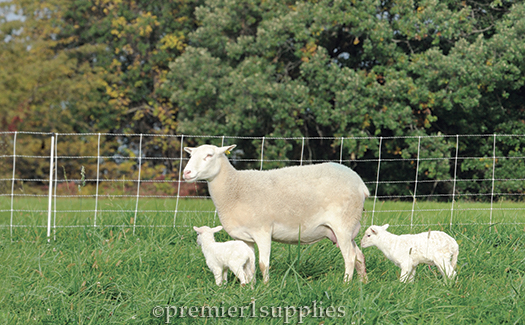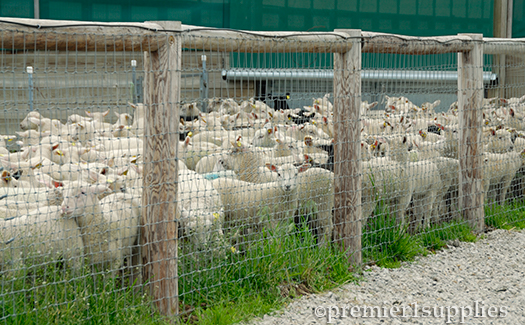Electric fence is a psychological barrier, not a physical barrier. Animals have a tendency to move forward when first shocked. Having a barrier of substance on the opposite side of the fence during an animal’s first encounter will reduce this possibility in the field.
You must train animals to know and respect electrified fence. This initial experience helps create the pain barrier that temporary fence relies on to be effective. If an animal is not properly trained, they will not respect fences and will test them instead. If you do not keep a fence energized at all times your animals will lose fear of it. Then they will go over or through it. Retraining is difficult.
To train livestock to an electric fence:
- Install netting inside a permanent area for a day or so. (i.e. a small corral). Ideally this will be the same netting you use in the field.
- Properly electrify the netting, that means making sure that there’s at least 3000 to 4000 volts on the fence line (use an electric fence tester).
- Bring livestock into the fenced area. When the animals touch the fence they will learn that the netting causes pain and to stay away from it. Most animals learn to avoid the fence within 2-3 shocks.
- To encourage animals to inspect the fence, place ribbons or peanut butter on the electrified wires. Curiosity will get the better of them.
- If you do not have a permanent area to train in, install the netting close to home so you can directly monitor the animals.
- When you then move them out to the field or timber they should recognize it as a pain barrier and will be less likely to test the fence.
Keep in mind that despite the best training, animals may breach the fence if: they’re hungry/starved, freshly weaned, in the heart of breeding season, bored, or frightened. Do what you can to manage these conditions. For breeding season and weaning, keep at least one pasture between the animals you want separated.




